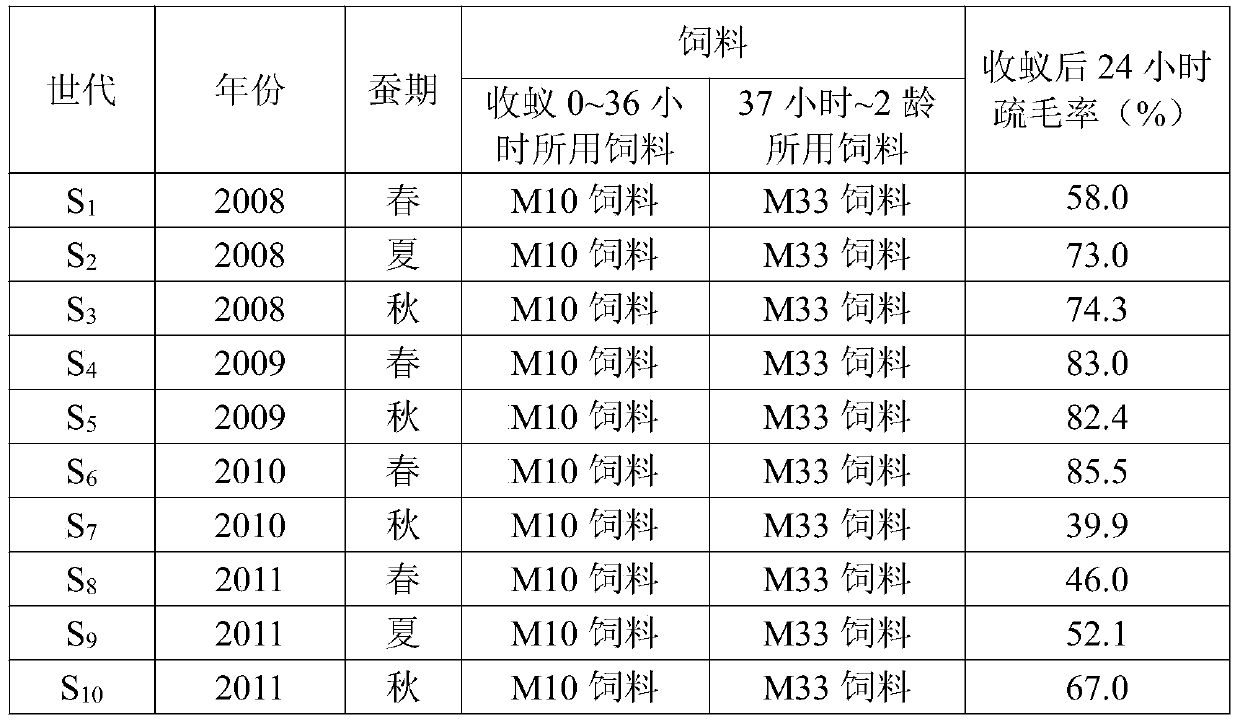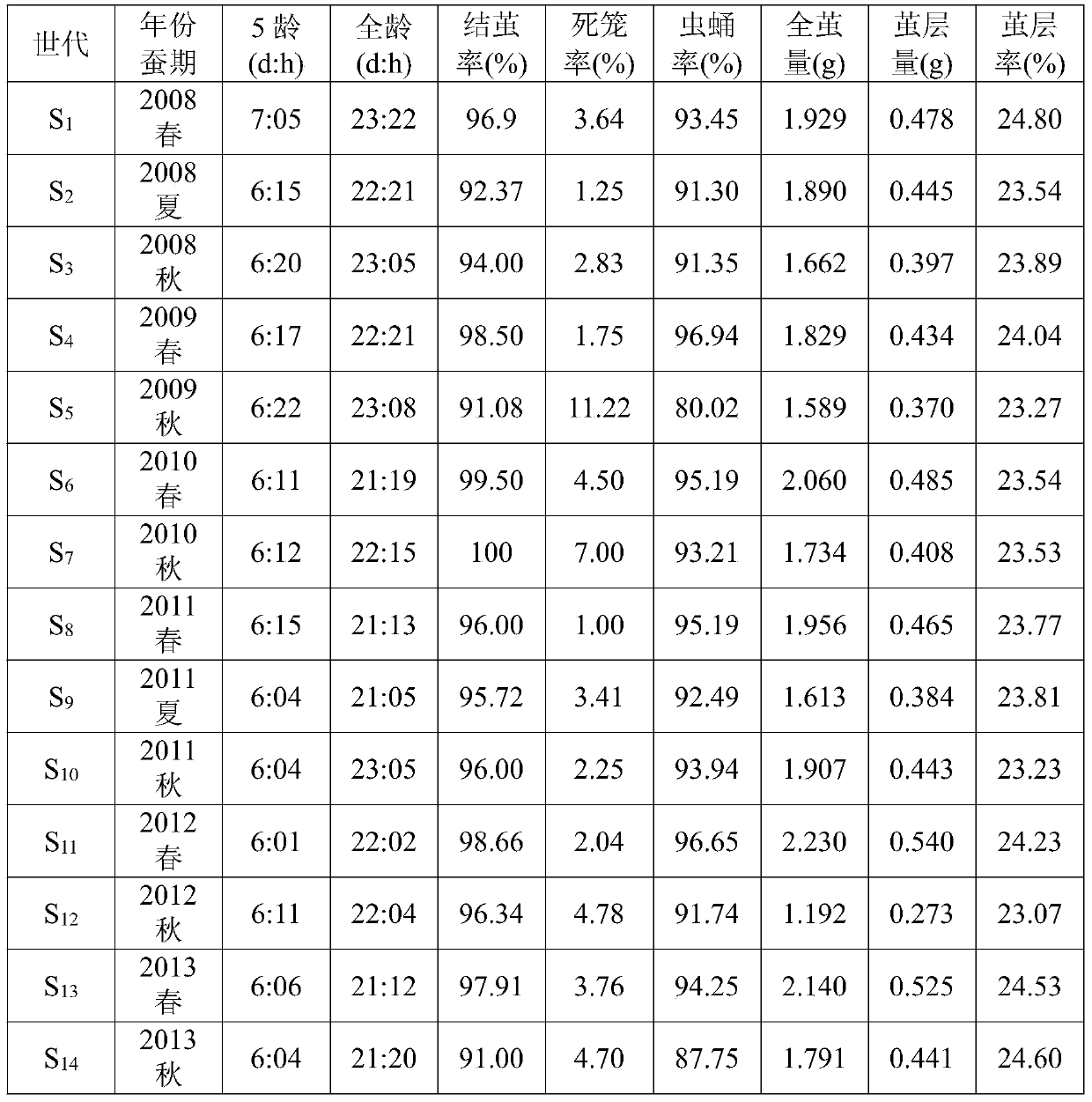Breeding method of artificial-feed-adaptive silkworm variety
An artificial feed and adaptability technology, applied in the direction of animal feed, animal feed, application, etc., can solve the problems of silkworm varieties without artificial feed adaptability, low breeding efficiency, low promotion rate, etc., and achieve good feeding ability of artificial feed, breeding High efficiency and improved feeding effect
- Summary
- Abstract
- Description
- Claims
- Application Information
AI Technical Summary
Problems solved by technology
Method used
Image
Examples
Embodiment 1
[0040] Taking Jingpine A and Jingpine B, which have excellent comprehensive traits and have been widely used in production, as breeding materials, they were combined into Jingpine A×Jingpine B in 2007, denoted as S 1 In the first generation, the mixed breeding of moths was adopted from the spring silkworm stage in 2008. First, the ants were harvested with M10 pellet artificial feed, and then replaced with M33 pellet artificial feed after 24 hours of feeding. The entire generation adopts non-stop feeding and breeding, and timely eliminates slow-growing and low-quality silkworms. After cocooning, rough selection is carried out according to cocoon shape, shrinkage, and cocoon layer thickness, and mating is reserved for seedlings. S 2 ~S 5 The processing method is the same as that of S 1 .
[0041] Single moth breeding stage (S 6 After) to select moth area. First, use M10 pellet artificial feed to collect more than 20 moth areas of ants, and investigate the hair thinning rate...
Embodiment 2
[0053] The "R Jingsong" obtained in Example 1 was crossed with the "R Haoyue" Japanese intercrossing original species selected by the same method (when R Jingsong is used as the female parent, it is an orthogonal species, when R Haoyue is used as the female parent, it is called Inverted species), the obtained "R Jingsong × R Haoyue" is a silkworm variety with excellent economic properties and adaptability to artificial feed.
[0054] Basic traits and characteristics of the first-generation hybrid "R Jingsong×R Haoyue":
[0055] R Jingsong×R Haoyue is a silkworm species adaptable to artificial feed with dual-hua and four-sleeping properties, a medium×Japanese hybrid, fed with artificial feed containing 33% mulberry leaf powder at the 1st to 2nd instar, and the silkworm emergence rate at the 2nd instar within 96 hours was 96.2%. In 192 hours, the rate of silkworm emergence at the third instar was 93.3%. Yue Nian eggs are both bluish-gray in reciprocal crossing, elliptical in ov...
PUM
 Login to View More
Login to View More Abstract
Description
Claims
Application Information
 Login to View More
Login to View More - Generate Ideas
- Intellectual Property
- Life Sciences
- Materials
- Tech Scout
- Unparalleled Data Quality
- Higher Quality Content
- 60% Fewer Hallucinations
Browse by: Latest US Patents, China's latest patents, Technical Efficacy Thesaurus, Application Domain, Technology Topic, Popular Technical Reports.
© 2025 PatSnap. All rights reserved.Legal|Privacy policy|Modern Slavery Act Transparency Statement|Sitemap|About US| Contact US: help@patsnap.com



